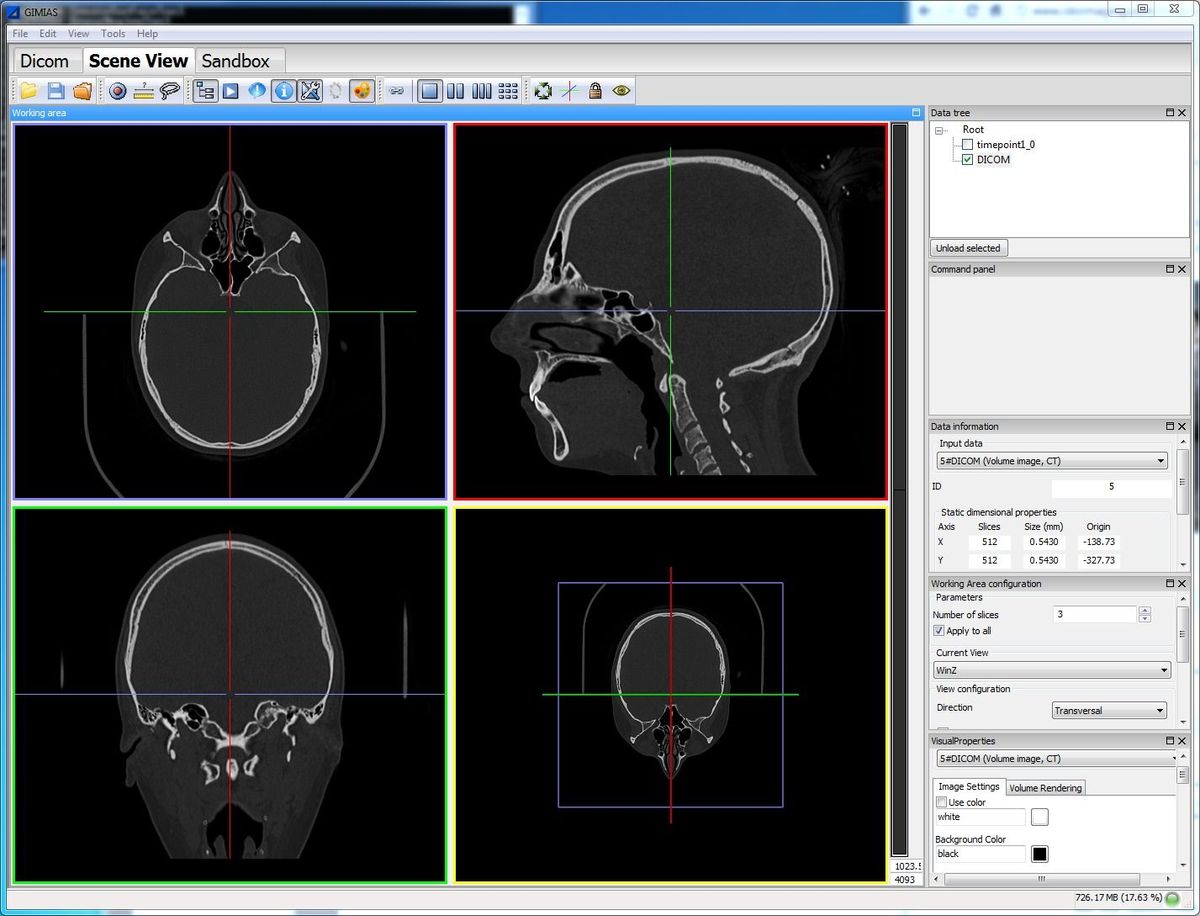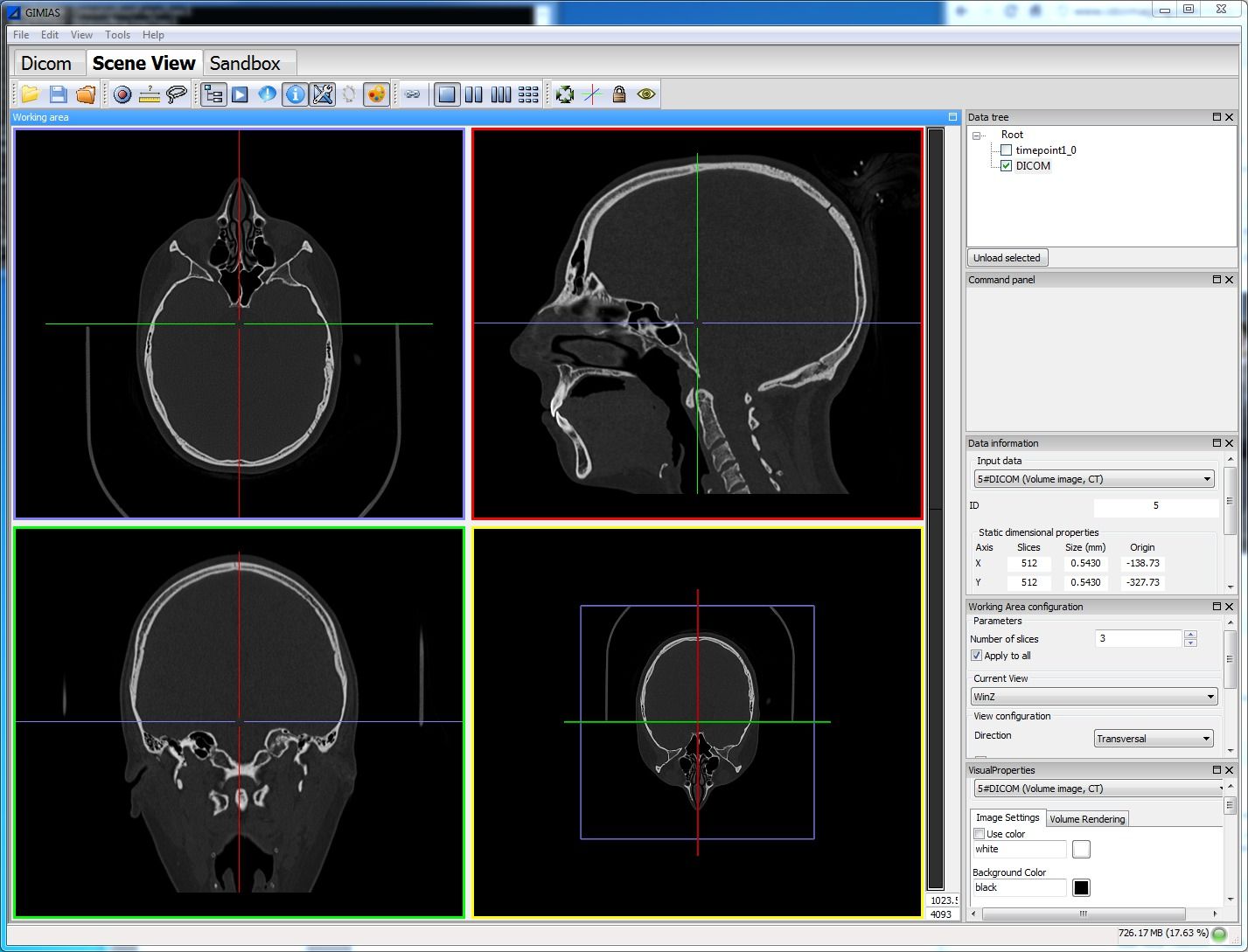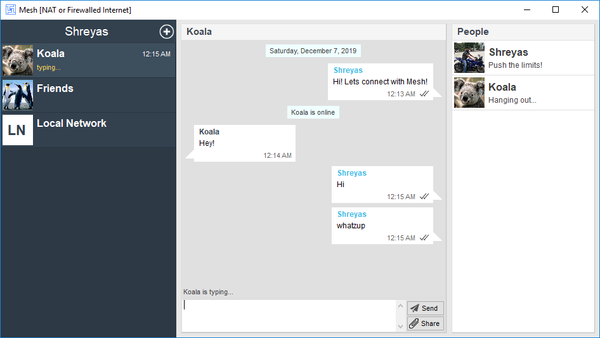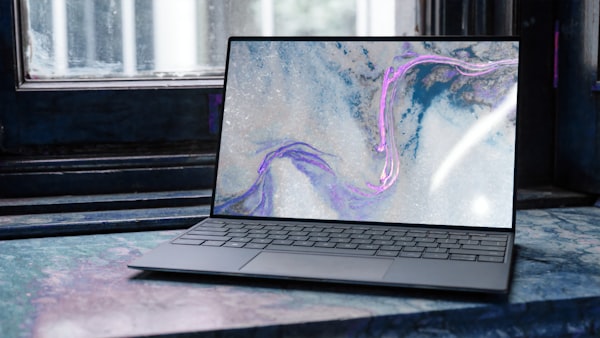Gimias: Open source Framework for building Medical Imaging & Medical Simulation applications for Windows and Linux

Gimias is an open source framework for medical imaging analysis and simulation, The term "framework" indicates its core users, developers, and researchers, as it can be used to develop and generate medical imaging applications as it consists from several utilities to make the production easier. It has been used and utilized around the world by companies, researchers, universities, & hospitals to create functional workstations or prototype platforms. Gimias's website has a long list of projects and prototypes created by Gimias.
Gimias provides full functional PACS/DICOM workstation as core feature, that can has customizable workflow. It has multi-layout DICOM viewer that can extended through plugins.
Because Gimias can be used in medical simulation as well, we have featured it in our Medical Simulation article: Top 15+ Free Open source Medical Simulation Projects for Windows, Mac OSX, and Linux.

Gimias has a plugins system that makes it easy to build plugins (extensions) for it, the current plugins repository contains rich list of plugins which extends its functionalities and provide more specific usage for it like Angio Morphology, Cardian Quantification, Cardian Segmentation, Clinical reporting, Generic Segmentation, Mesh tools, CHD Segmentation, Perfusion Quantification Measured Using MRI in Oncology and more.
There is no better description to describe Gimias other than the one provided by the core team:
GIMIAS is a workflow-oriented environment for solving advanced biomedical image computing and individualized simulation problems, which is extensible through the development of problem-specific plug-ins. In addition, GIMIAS provides an open source framework for efficient development of research and clinical software prototypes integrating contributions from the Physiome community while allowing business-friendly technology transfer and commercial product development.
GIMIAS is particularly tailored to integrate tools from medical imaging, computational modeling, numerical methods, and computer graphics to provide scientific developers and researchers with a software framework for building a wide variety of tools. Multi-modal image processing, personalized model creation, numerical simulation and visualization of simulation results are some of the possible applications for which GIMIAS has been designed. The aim of this framework is to combine tools from different areas of knowledge providing a framework for multi-disciplinary research and clinical study.
GIMIAS allows building medical prototypes for clinical evaluation, in the areas of medical image analysis, modeling, and simulation. It simplifies the integration of tools needed to build new clinical workflows, and the use of common libraries for user interfaces, visualization, image processing, DICOM access, etc, that are commonly used as standard in Virtual Physiological Human (VPH) research.
Gimias Features
- Customizable Dynamic GUI (Graphical User Interface)
- Full-featured PACS/ DICOM work station
- Clinical workflow navigation
- Multimodal 2D and 3D image interactive visualization
- Manual segmentation and quantification
- Powerful Mesh/ surface rendering: Basic surface mesh manipulation and image processing
- Signal viewer
For all features, please refer to [Gimias features]
Gimias suites (Prototypes)
Gimias's team has released custom suites (prototypes) to facilitate the production of clinical applications, The prototypes (suites) are currently listed to be installed and used for free and each one of them is consisting from several plugins and customization which improves the workflow, extends the functionalities and productions.
1- CardioLab Suite
The CARDIO SUITE for GIMIAS allows performing an entire workflow from medical images to characterization and quantification of myocardial diseases and Cardiac Resynchronization Therapy (CRT) planning, in order to allow the clinician to adequately plan the treatment and the intervention.
2- AngioLab Suite
The ANGIO SUITE for GIMIAS allows performing an entire workflow from medical images to the morphological characterization of the aneurysm sac and parent vessels, virtual treatment and advanced visualization of fluid dynamic simulation results. This helps the clinician to assess the aneurysm rupture risk and choose the best treatment option
3- Osteo Suites
The OsteoSuite for GIMIAS is currently under construction. It will allow the user to perform basic orthopedic visualization, segmentation and measurement tasks; as well as other advanced features that are not yet released, such as the reconstruction of bone, surfaces out of contours input by the user and the MySpine medical workflow. See the videos below.
4- Neuro Suites
Neuro Suites are several neuro-specific suites generated for different usage and clinical implementation with Gimias. [res]
Platforms
- Linux
- Windows
Development
Gimias is developed using C++.
GIMIAS is built over widely used open source C++ based libraries like the Visualization Toolkit (VTK, suported by Kitware Inc.), the Insight Toolkit (ITK, also supported by Kitware Inc.), the DICOM Toolkit (DCMTK, supported by Offis in Germany), the Medical Imaging Interaction Toolkit (MITK, developed at Division of Medical Informatics, Deutsches Krebsforschungszentrum (DKFZ), Germany) and other commonly used C++ libraries (Boost, wxWidgets, CXXTest, among others).



